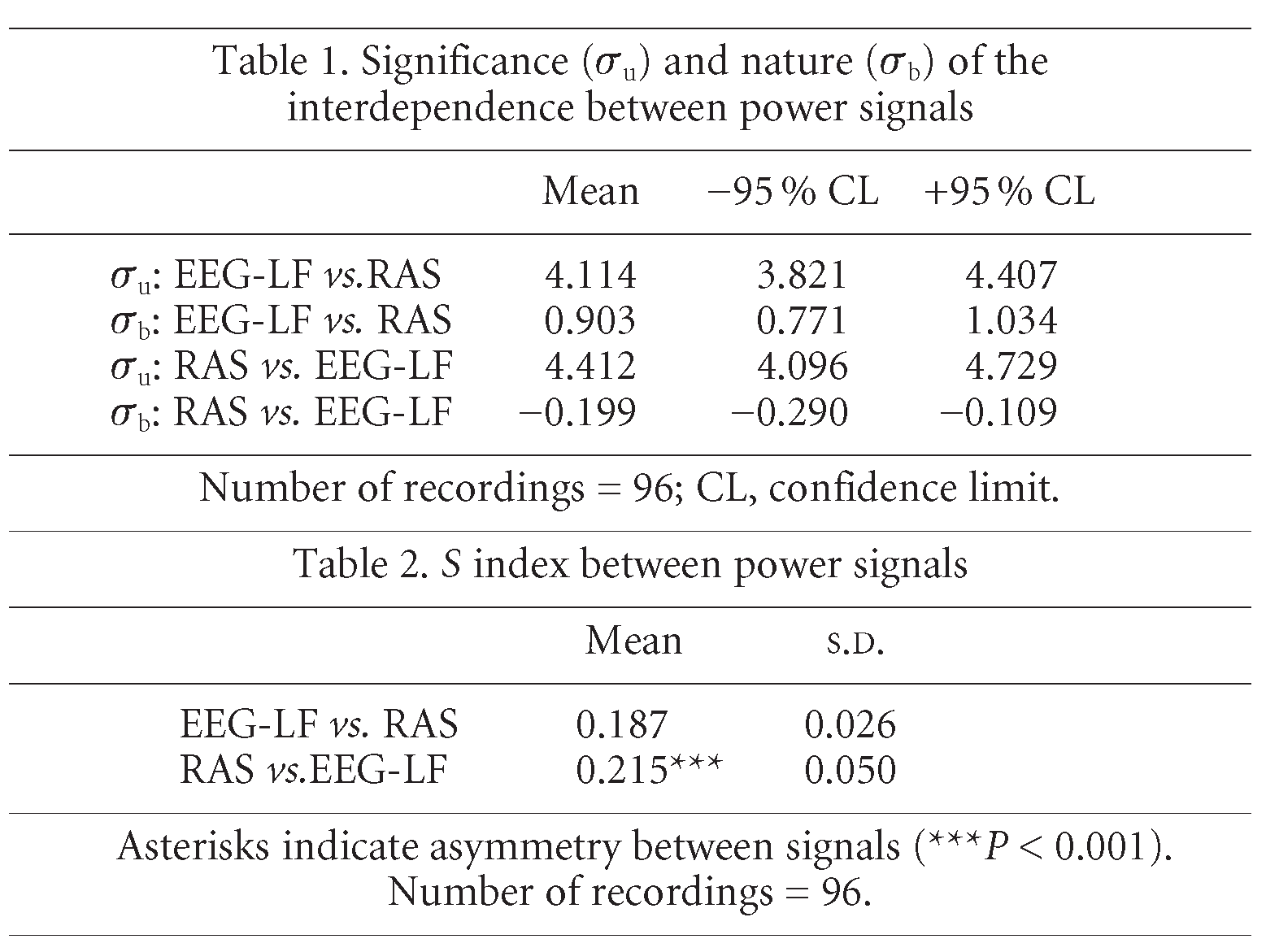Many physiological studies are interested in the complexity and non-linearity of the EEG and the respiratory activity (RA). Relationships between these signals in mammals, have been estimated using a non-linear approach (Burioka et al. 2001). Similar studies have been performed on the EEG of reptiles, in order to characterise its non-linear behaviour and to compare it with the human EEG during sleep (González et al. 1999). Nevertheless, no non-linear studies have been carried out in reptiles to describe the relationships between central nervous and respiratory activities. Therefore, cortical EEG and respiratory signals were simultaneously registered in six lizards (Gallotia galloti) at 25 °C, with the aim of studying the degree of interdependence between both physiological systems, by using a non-linear systems approach.
Monopolar cortical EEG recordings were carried out by means of electrodes implanted on the right medial cortex. Simultaneously, the RA was recorded from the EMG of intercostal muscles. All surgical procedures were performed under ether anaesthesia. Every second, the EEG was digitised at 128 Hz and the EMG at 1 kHz, and the corresponding power spectra (PSD) were obtained via FFT, in order to calculate the power of the EEG low-frequency band (0.1-4 Hz), as well as the power of the main respiratory peak. This procedure was repeated every second during a 10 min period. In this way, two 600-data-point power signals (EEG-LF and RAS) were obtained. Continuous recordings from 10.00-14.00 h provided 24 consecutive power signals of these characteristics for each lizard.The state space of each power signal was reconstructed using time delay embedding (µ = 8; τ = 3). The interdependence was assessed by means of a non-linear index S (Arnhold et al. 1999). The eight nearest neighbours of each reference vector in the state space, and a Theiler window equal to 5 have been used to calculate S. The significance (ρu > 2 indicates significance at 95 % confidence interval) and the nature (ρb < 2 indicates linear nature) of the interdependence between the power signals, were assessed by means of a multivariate variant of the surrogate data test for non-linearity (Pereda et al. 2002). A paired t test was used to check the existence of asymmetry in the interdependence between the above mentioned power signals. Differences were considered significant if P < 0.05. The surrogate data test showed that the index S measured significant interdependence between EEG-LF and RAS, and that the interdependence was of linear nature (Table 1). There was asymmetry in the interdependence between EEG-LF and RAS (Table 2).
In conclusion, we have found that in reptiles the RA depends on the EEG-LF activity in a linear way. In humans during slow-wave sleep (SWS), the reduced EEG complexity is attributed to an increased regularity in breathing (Burioka et al. 2001). Our findings are in line with the hypothesis that reptilian waking could evolve into mammalian SWS.
This work was supported by the grants BFI2002-01159 of the Spanish Ministerio de Ciencia y Tecnología, and PI020194 of F.I.S.

